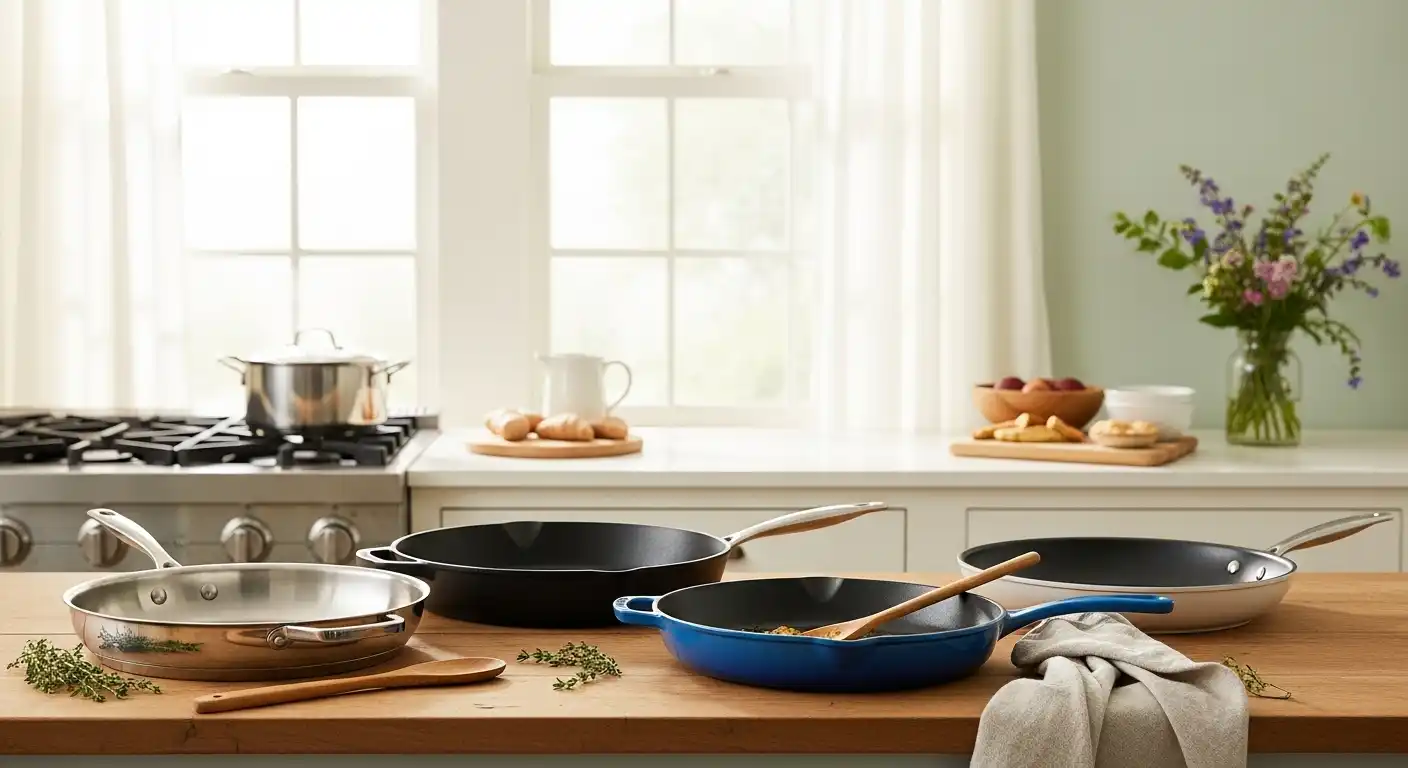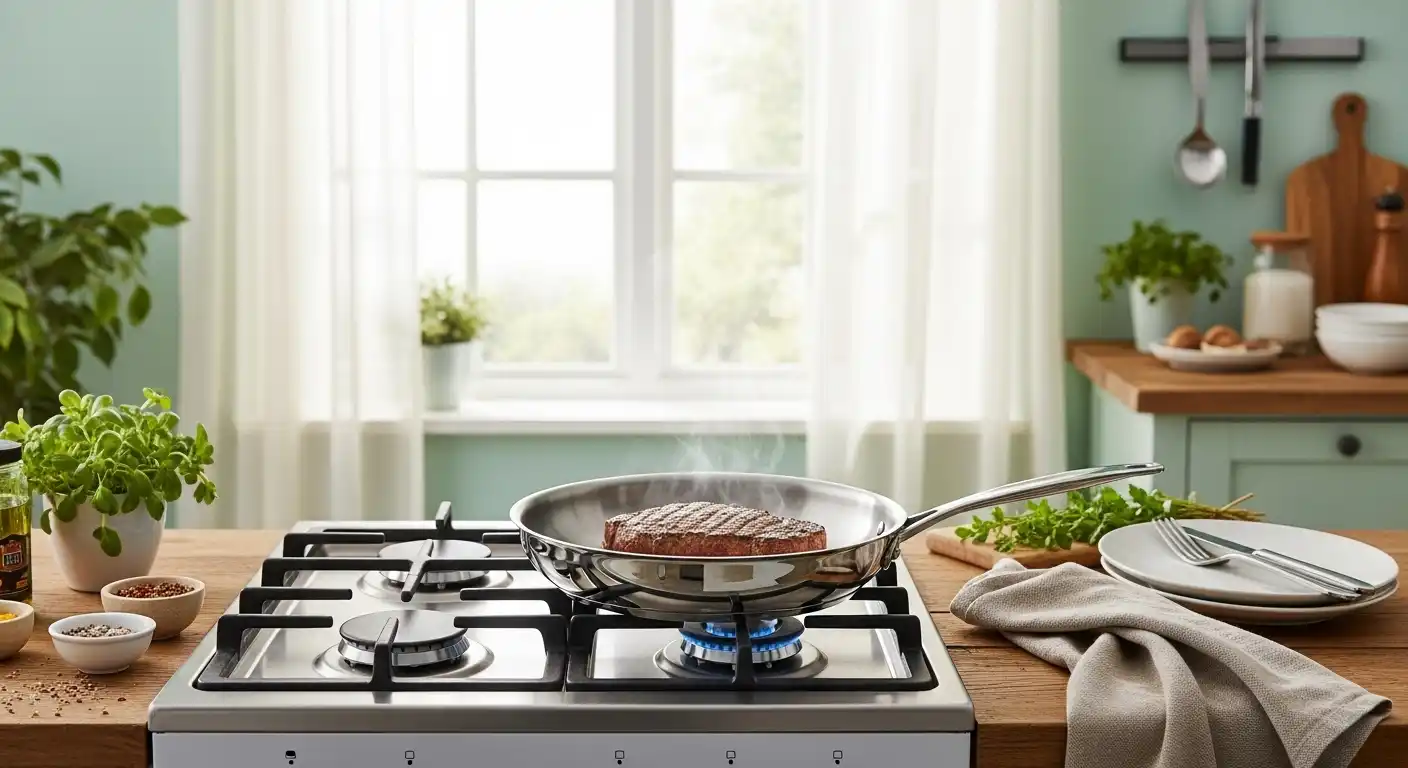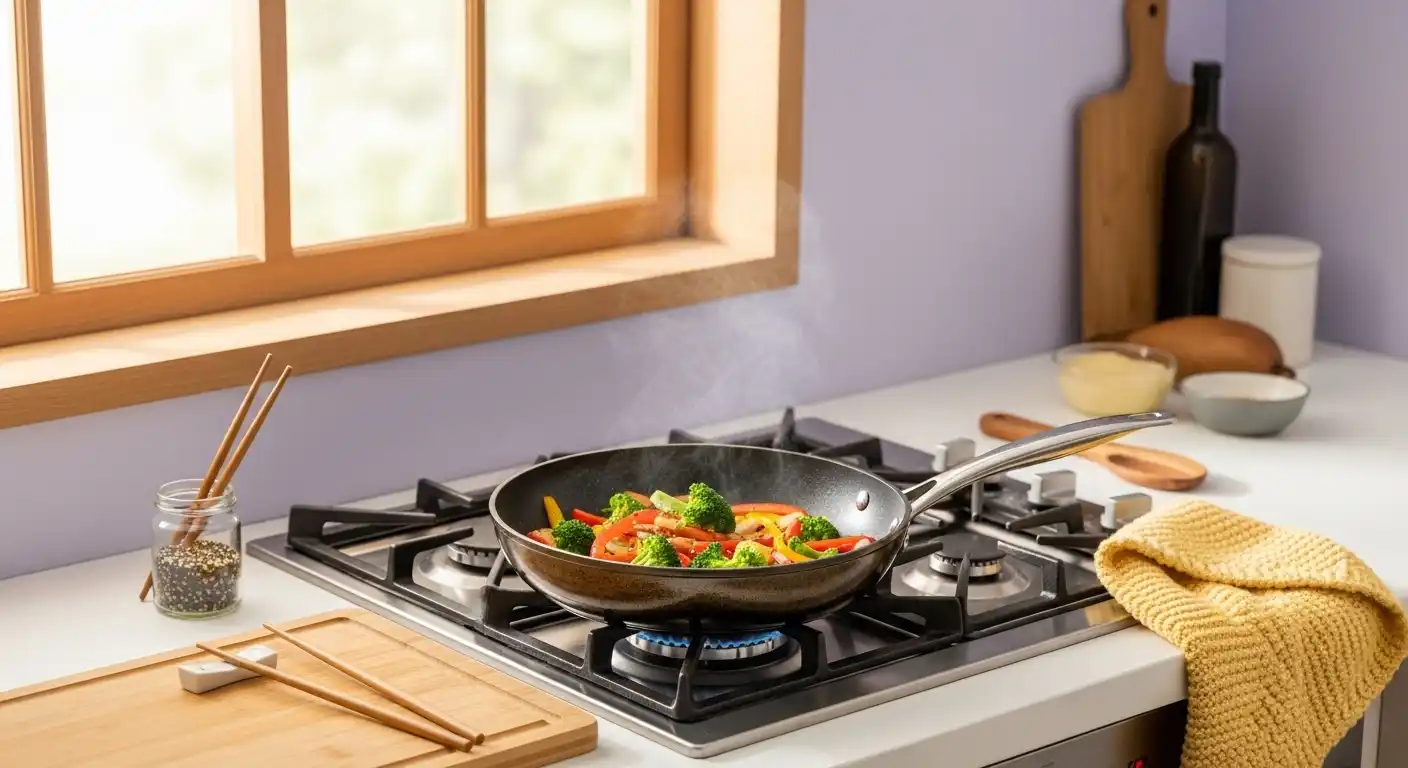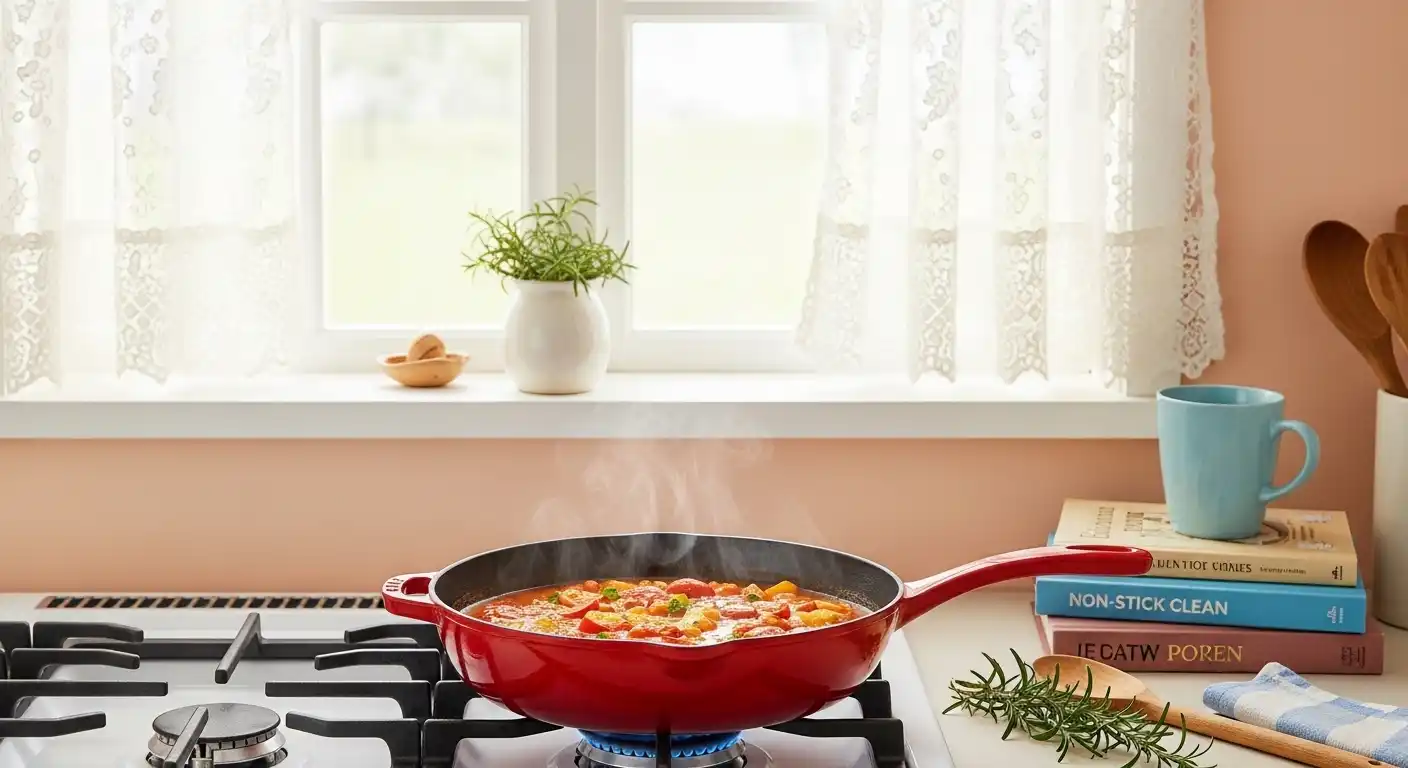What Can You Use Instead Of A Cast Iron Skillet?

Cast iron skillets are beloved for their durability, heat retention, and versatility in the kitchen.
From searing steaks to baking cornbread, they’re a staple for many home cooks.
But what if you don’t have one, or you’re looking for an alternative that suits your cooking style or kitchen setup?
In this guide, we’ll explore the best substitutes for a cast iron skillet, their pros and cons, and how they stack up for various cooking tasks.
🎄 Christmas & Year-End Amazon Deals !
Don’t miss out on the best discounts and top-rated products available right now!
*As an Amazon Associate, I earn from qualifying purchases.
Whether you’re cooking on a glass-top stove or an induction cooktop, we’ve got you covered with practical options.
Why Look for Alternatives to a Cast Iron Skillet?
Cast iron skillets are heavy, require seasoning, and aren’t always compatible with every cooktop.
For instance, you might wonder, “Can you use a cast iron skillet on an induction cooktop?”
While the answer is yes, not everyone has the arm strength to lift a hefty skillet or the patience to maintain its seasoning.
Some cooks also worry about scratching surfaces, like with the question, “Will cast iron scratch an induction cooktop?” Others might want lighter cookware or something that doesn’t need as much upkeep.
Whatever your reason, there are plenty of alternatives that can mimic the performance of cast iron without the extra effort.
Top Alternatives to a Cast Iron Skillet
If you’re searching for what can you use instead of a cast iron skillet, here are some excellent options, each with unique strengths.
1. Stainless Steel Skillets

Stainless steel skillets are a fantastic substitute for cast iron.
They’re durable, non-reactive, and can handle high heat for searing and browning.
Unlike cast iron, stainless steel is lighter and doesn’t require seasoning.
It’s also safe for all cooktops, including induction, and can go straight into the dishwasher.
However, stainless steel doesn’t retain heat as well as cast iron, so it may not be ideal for dishes requiring long, even cooking, like cornbread.
For tips on managing heat, check out how to reduce smoke when cooking with cast iron, as similar techniques apply.
2. Carbon Steel Pans

Carbon steel is the closest cousin to cast iron. It’s lighter, heats up faster, and still develops a natural non-stick patina with proper seasoning.
🎄 Christmas & Year-End Amazon Deals !
Don’t miss out on the best discounts and top-rated products available right now!
*As an Amazon Associate, I earn from qualifying purchases.
It’s perfect for high-heat cooking, like stir-frying, and works well on various cooktops.
If you’re curious about seasoning, you can apply techniques from seasoning a cast iron Dutch oven to carbon steel.
The downside? Carbon steel still requires some maintenance, though less than cast iron. It’s also not dishwasher-safe.
3. Enameled Cast Iron

Enameled cast iron offers the heat retention of traditional cast iron without the need for seasoning.
It’s great for slow-cooking dishes and can even be used for deep frying.
This option is heavier than stainless steel but has a non-stick, easy-to-clean surface.
It’s also oven-safe, much like a regular cast iron skillet—learn more in Can your cast iron skillet go in the oven?.
The catch is the price, as enameled cast iron can be costly.
Curious about cast iron costs in general? See how much does a good cast iron skillet cost?.
4. Non-Stick Skillets
Non-stick skillets are lightweight and easy to clean, making them a go-to for beginners or those who want low-maintenance cookware. They’re great for eggs, pancakes, or delicate fish.
However, non-stick pans can’t handle the high heat that cast iron excels at, and they’re not ideal for searing.
Also, avoid using cooking sprays like Pam, as they can leave residue—check out Can you spray a cast iron skillet with Pam? for insights that apply to non-stick pans too.
🎄 Christmas & Year-End Amazon Deals !
Don’t miss out on the best discounts and top-rated products available right now!
*As an Amazon Associate, I earn from qualifying purchases.
Non-stick coatings may wear out over time, requiring replacement sooner than cast iron. For longevity tips, see how often to replace a cast iron skillet.
5. Cast Aluminum Cookware
Cast aluminum is another lightweight alternative that conducts heat well. It’s often coated with a non-stick surface, making it user-friendly.
Is it safe? Yes, modern cast aluminum cookware is safe—learn more in Is cast aluminum cookware safe to use?.
It’s also compatible with most cooktops, though it may not match cast iron’s heat retention.
The downside is that aluminum can react with acidic foods, so it’s not ideal for tomato-based dishes.
Choosing the Right Alternative for Your Cooking Needs
The best substitute depends on your cooking style and kitchen setup.
For high-heat searing, carbon steel or stainless steel is your best bet. For low-maintenance cooking, non-stick or enameled cast iron works well.
If you’re using a specialized cooktop, like a Blackstone griddle, ensure your alternative is compatible.
Similarly, avoid using any skillet in a microwave—cast iron or otherwise—due to safety concerns, as explained in Can you use a cast iron skillet in a microwave?.
Special Considerations for Substitutes
When choosing an alternative, consider the following:
- Weight: Cast iron is heavy, so lighter options like stainless steel or non-stick pans may be easier to handle.
- Maintenance: If seasoning feels like a chore, opt for enameled cast iron or non-stick. For cleaning tips, see how to clean a cast iron wok, as similar methods apply.
- Versatility: Want a pan that does it all? Carbon steel is nearly as versatile as cast iron and works for woks too—compare them in Wok vs. cast iron skillet.
Can You Store Food in These Alternatives?
Storing food in cast iron can be tricky due to potential rusting—learn more in Can you put cast iron in the fridge? or Can you freeze in a cast iron skillet?.
Stainless steel and enameled cast iron are better for storing leftovers, as they’re non-reactive and less prone to damage.
🎄 Christmas & Year-End Amazon Deals !
Don’t miss out on the best discounts and top-rated products available right now!
*As an Amazon Associate, I earn from qualifying purchases.
For proper storage tips, check out how to store food in cast iron cookware, which also applies to some of these alternatives.
Final Thoughts on Cast Iron Skillet Substitutes
While cast iron skillets are iconic, they’re not the only option for great cooking.
Stainless steel, carbon steel, enameled cast iron, non-stick, and cast aluminum all offer unique benefits, depending on your needs.
Each alternative has its trade-offs, but with the right choice, you can achieve similar results without the weight or maintenance of cast iron.
For more on cast iron care, explore how to use a pre-seasoned cast iron skillet for the first time.
Ultimately, the best skillet is the one that fits your kitchen, cooking style, and preferences.
Experiment with these alternatives and find your perfect match!
